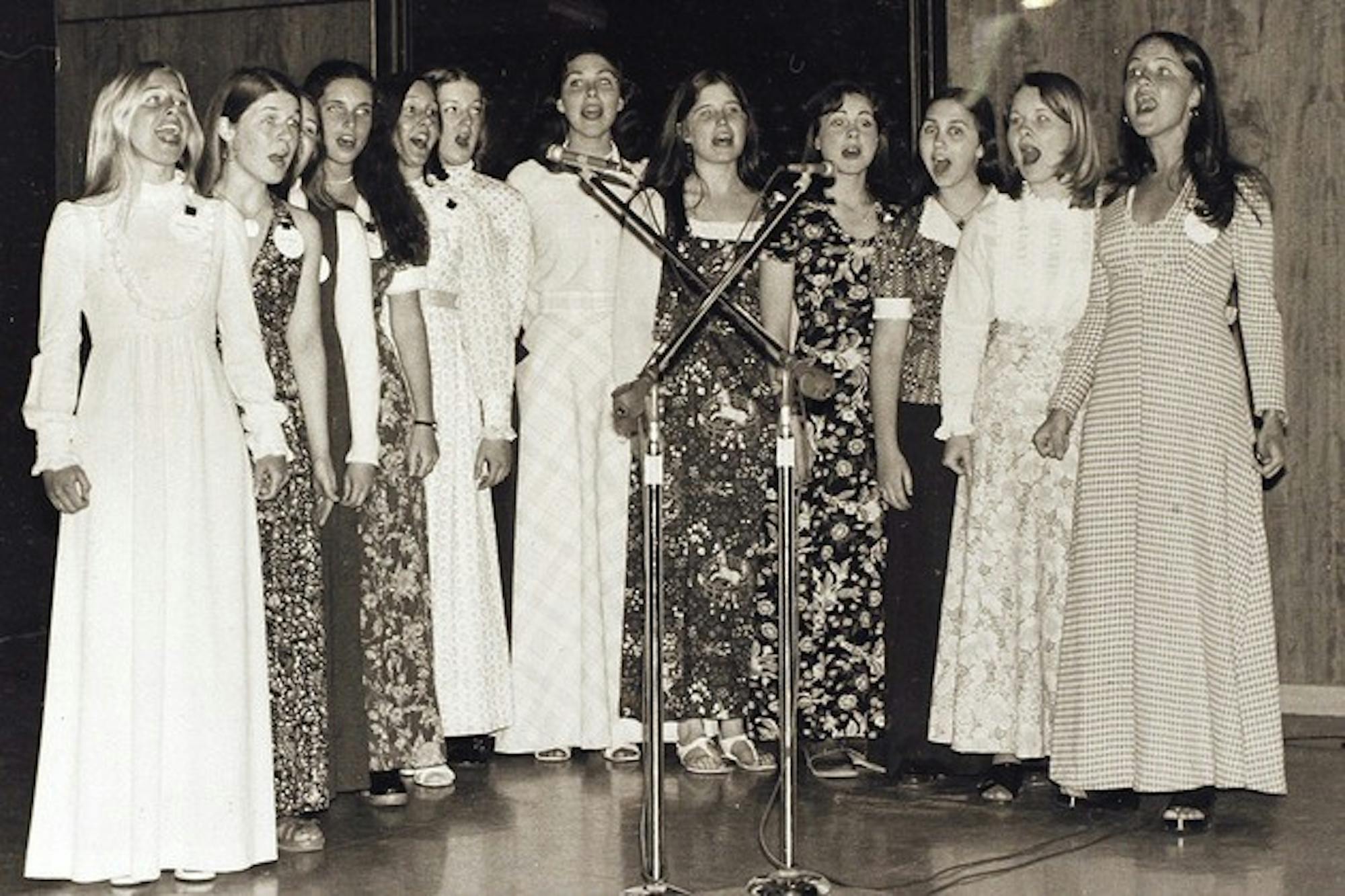Women remained a minority during the 1970s, making up about one-tenth of the campus. However, with this uncharted territory came opportunities for women in the College's artistic community.
"The arts acted as a tremendous equalizer between males and females," Sara Hunter '76, who was involved with the theater department, said. "In the arts, you're working together and working toward the same purpose.
Lee Rogers '78, formerly a member of the Distractions later renamed the Woodswind and eventually the Decibelles all-female a cappella group said that the arts were an opportunity for women to become involved on campus in a way that was in no way restricted to men.
"I thought there were excellent opportunities for anybody who wanted to participate in the arts," Rogers said.
The early years of coeducation were marked in particular by the formation of many new groups, to "counterpart the Aires back then," according to Hunter.
"The best part [of being a '76] was that we were the first to do everything," Hunter said. "Because there wasn't a lot in place already, you could start everything."
Women were not restricted to only music within the arts at Dartmouth, Hunter said, noting that she was active within the theater department while also a member of the Distractions. Hunter said she remembers being received by the department with open arms.
"The drama department and major seemed so open to the women who came in," Hunter said. "The experiences really molded my first years at Dartmouth."
Prior to 1972, the theater department involved local residents and visiting female students in its performances to fill female roles, according to Hunter.
"There were also girls who came from Hanover High [School] to act," she said. "There was also the 12 College Exchange, which was a precursor to having coeducation where students were enrolled on campus. There was a minority of women, but some of them, like Meryl Streep, were a huge addition to Dartmouth theater."
In addition to working in music and theatre, women were also seen participating in the arts within the Greek system. While an undergraduate, Hunter said she participated in the inter-fraternity play contest, which "had been a tradition for years but really revved up having more women on campus," she said.
"That was a way for me to experience the frats in a really fun way versus well, there was definitely some dicey stuff," she said. "But the play competition made it really enjoyable."
Since 1972, the College has come a long way in terms of integrating both men and women in many aspects of student life. Hunter said that much of this equality was jump-started by women being so active within the arts and by promoting an attitude of egalitarianism that quickly replaced the male-dominated culture.
In the 1990s, the percentage of women in the student body neared 50 percent. The arts remained a section of campus open to women with less obstacles than others, according to Stephanie Crowley '91.
"There was a lot of theater happening," she said. "There were plenty of opportunities as long as you were willing to be flexible about what you wanted to do."
Despite being welcomed into the arts community at Dartmouth, female students faced the external issue that women still did not have an equal footing in the world of the arts beyond campus, she said.
Pam Chandran '90, a film major and director of the Dartmouth Film Society, said that it was sometimes difficult to find female visiting professors and artists to come to the College.
"If you wanted to get someone who had a name for themselves in the art field, either as a professor or an artist, those people tended to be male," Chandran said. "It was hard to find established women artists and performers who had enough of a name that they could come and serve for a term."
Chandran said she saw the same lack of female representation through her experience with the Dartmouth Film Society. When she was a student, the society tended to screen films that were created primarily by men, simply because at the time men tended to produce the "big name" films.
"[The Dartmouth Film Society] disproportionately showed films created by men and that was because the films created by women by in large tended to be independent films or documentaries," Chandran said. "It was rare that you had an A-level woman director."
Challenging this disparity when she became director of the society, Chandran decided to create a series called "Reel Women," which screened only movies created by women.
In the initial years of coeducation, women had the opportunity "to break in as a minority at the college" through the arts, Hunter said, but even as the gender disparity closed, women beyond campus found it challenging to break into the arts after graduation.




